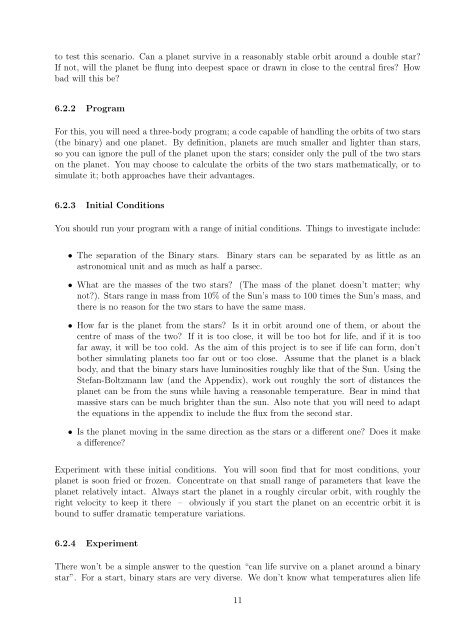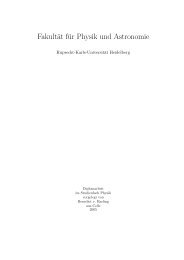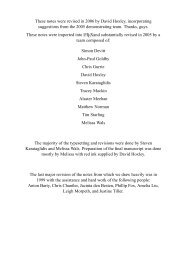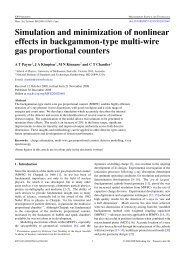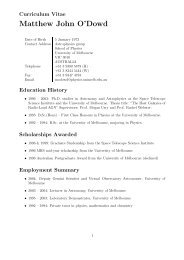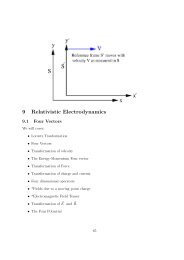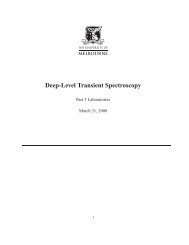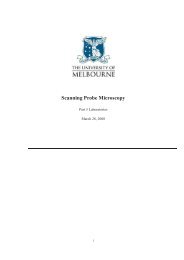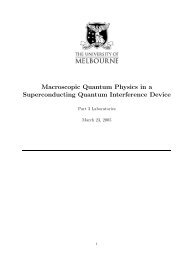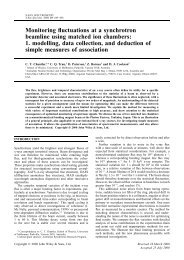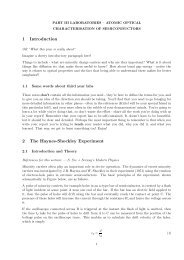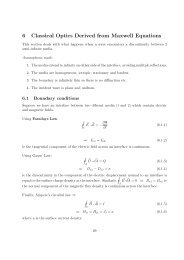Computational Astrophysics: N-Body Exercise
Computational Astrophysics: N-Body Exercise
Computational Astrophysics: N-Body Exercise
Create successful ePaper yourself
Turn your PDF publications into a flip-book with our unique Google optimized e-Paper software.
to test this scenario. Can a planet survive in a reasonably stable orbit around a double star?<br />
If not, will the planet be flung into deepest space or drawn in close to the central fires? How<br />
bad will this be?<br />
6.2.2 Program<br />
For this, you will need a three-body program; a code capable of handling the orbits of two stars<br />
(the binary) and one planet. By definition, planets are much smaller and lighter than stars,<br />
so you can ignore the pull of the planet upon the stars; consider only the pull of the two stars<br />
on the planet. You may choose to calculate the orbits of the two stars mathematically, or to<br />
simulate it; both approaches have their advantages.<br />
6.2.3 Initial Conditions<br />
You should run your program with a range of initial conditions. Things to investigate include:<br />
• The separation of the Binary stars. Binary stars can be separated by as little as an<br />
astronomical unit and as much as half a parsec.<br />
• What are the masses of the two stars? (The mass of the planet doesn’t matter; why<br />
not?). Stars range in mass from 10% of the Sun’s mass to 100 times the Sun’s mass, and<br />
there is no reason for the two stars to have the same mass.<br />
• How far is the planet from the stars? Is it in orbit around one of them, or about the<br />
centre of mass of the two? If it is too close, it will be too hot for life, and if it is too<br />
far away, it will be too cold. As the aim of this project is to see if life can form, don’t<br />
bother simulating planets too far out or too close. Assume that the planet is a black<br />
body, and that the binary stars have luminosities roughly like that of the Sun. Using the<br />
Stefan-Boltzmann law (and the Appendix), work out roughly the sort of distances the<br />
planet can be from the suns while having a reasonable temperature. Bear in mind that<br />
massive stars can be much brighter than the sun. Also note that you will need to adapt<br />
the equations in the appendix to include the flux from the second star.<br />
• Is the planet moving in the same direction as the stars or a different one? Does it make<br />
a difference?<br />
Experiment with these initial conditions. You will soon find that for most conditions, your<br />
planet is soon fried or frozen. Concentrate on that small range of parameters that leave the<br />
planet relatively intact. Always start the planet in a roughly circular orbit, with roughly the<br />
right velocity to keep it there – obviously if you start the planet on an eccentric orbit it is<br />
bound to suffer dramatic temperature variations.<br />
6.2.4 Experiment<br />
There won’t be a simple answer to the question “can life survive on a planet around a binary<br />
star”. For a start, binary stars are very diverse. We don’t know what temperatures alien life<br />
11


